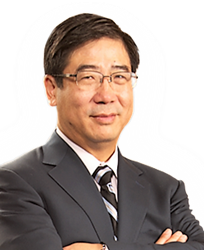
Dr. Kaixuan Liu
Spinal bone spurs aren’t rough or jagged like the spurs on cowboy boots. These spurs are typically smooth and often don’t cause any problems at all. But when they happen to press on nearby nerves, muscles and other structures in the neck and back, bone spurs can become very painful.
WEST ORANGE, N.J. (PRWEB)
September 17, 2020
It’s ironic that spinal bone spurs are the body’s attempt to heal itself by adding extra bone to a damaged area in the neck or back. But the bony growths themselves can cause suffering, according to Kaixuan Liu, MD, PhD, founder and medical director of Atlantic Spine Center.
Contrary to popular belief, spinal bone spurs aren’t rough or jagged like the spurs on cowboy boots. Instead, Dr. Liu explains, these spurs are typically smooth and often don’t cause any problems at all. But when they happen to press on nearby nerves, muscles and other structures in the neck and back, watch out – bone spurs can become very painful.
“Spinal bone spurs can trigger pain by impinging nerve roots inside the spinal canal,” he says. “By the time this happens – which is often a slow process – you’re probably dealing with daily pain that can range from mild to severe. You should definitely be seen by a doctor.”
Causes and symptoms
Known medically as osteophytes, bone spurs are essentially little knobs of bone that can grow on spinal vertebrae. But why do they form? According to Dr. Liu, chronic friction, stress or pressure in the structures of the neck and back can provoke the body to try to protect itself from further insults by growing some extra bone in the area. The result is bone spurs.
“Several different factors can prompt spinal bone spur formation,” he says. “One, they can develop naturally as we age, which is why older adults experience bone spurs much more than younger people. Also, osteoarthritis – a condition much more common in seniors – is also linked to bone spur growth.”
As bone spurs begin to press on surrounding nerves, muscles and blood vessels, Dr. Liu recommends watching out for these symptoms:
-
Numbness or tingling in the arms or legs. - Pain in the neck, arms, lower back or legs.
- Muscle weakness in the arms or legs.
- In rare cases, numbness in and around the groin area and/or impaired bowel or bladder function. (This is an emergency requiring immediate medical care.)
“The location of your spinal bone spur has everything to do with the symptoms you experience,” Dr. Liu explains. “For example, if nerves in your neck are compressed by a bone spur, you’ll typically feel symptoms in your shoulders and arms.”
Diagnosis and treatment
Diagnosing a spinal bone spur starts with discussing your symptoms with a doctor, including when your pain began; what you were doing when it started; the progression of pain and other symptoms; and any activities that cause pain to worsen or lessen. Next, a physical exam will enable your doctor to determine your range of motion, measure your reflexes and detect any tenderness in the affected area.
“As for tests, usually X-ray or CT imaging scans are sufficient to visualize and diagnose a spinal bone spur,” Dr. Liu says. “If your doctor suspects it’s putting pressure on a spinal nerve, other diagnostic tests may also be done to pinpoint which nerves your bone spur affects.”
Treating spinal bone spurs is usually done non-surgically with so-called “conservative” measures, Dr. Liu notes. In most cases, mild to moderate pain and related symptoms will be markedly improved with this approach, he says.
What do conservative treatments include?
- NSAIDs (non-steroidal anti-inflammatory drugs) such as naproxen and ibuprofen to control pain and tissue swelling.
- Other pain relievers.
- Epidural steroid injections.
- Physical therapy.
- Rest.
- Modifying your physical activities.
Surgery may be recommended as a last resort if all other relief measures fail to control your spinal bone spur symptoms within 6 to 8 weeks, Dr. Liu says.
“Loss of coordination in your arms or legs may require doing surgery on a quicker timetable, but this decision is made jointly between your doctor and you,” he adds. “For the vast majority of those coping with spinal bone spurs, surgery isn’t needed and sweet relief is found with less invasive treatments.”
Atlantic Spine Center is a nationally recognized leader for endoscopic spine surgery with several locations in NJ and NYC. http://www.atlanticspinecenter.com, http://www.atlanticspinecenter.nyc
Kaixuan Liu, MD, is a board-certified physician who is fellowship-trained in minimally invasive spine surgery at Atlantic Spine Center.
Share article on social media or email:

